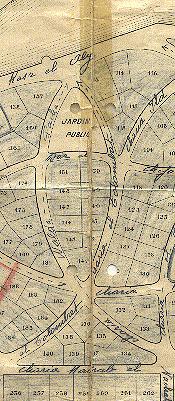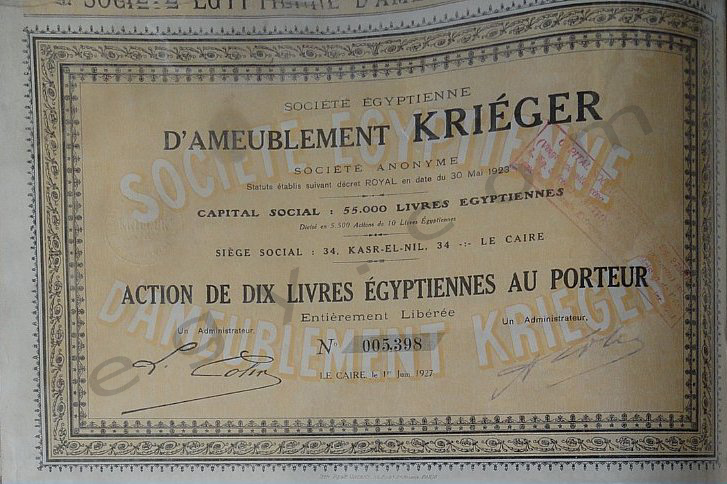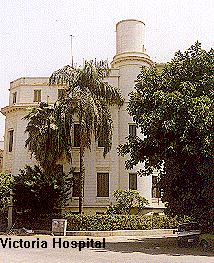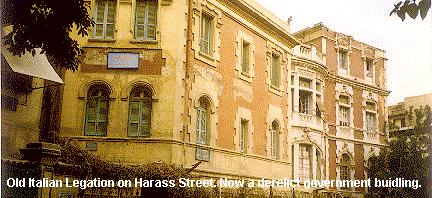A Retrospective PART 3
by Samir Raafat,
September 3, 1998

|
|
|
|
|
Cheers to our "talented" literature prize awardee. Your pain his gain !!!
|
|
|
EGY.COM - GARDEN CITY
|
|
by Samir Raafat,
September 3, 1998

Garden City's interwar residents had little to complain about. They lived in an exclusive neighborhood surrounded by like-minded people and their homes were second to none. If the Yegens, Cherif Sabrys, Cattauis and Baharis hired Jensen and Stephane Bodain to decorate their palaces, the Baehlers, Matossians and Levy-Garbouas retained Maison Kriéger of Paris and Cairo. The rest made do with Enrico Nistri, Armando Centofanti, Marius Contessini, Francesco Prinzvalli and Victor Lehmann prompting observers to remark Garden City's villas were more art museums than family dwellings.

Another plus was that unlike distant Heliopolis and Maadi, Garden City was a stone's throw from Cairo's commercial and banking hub so that the legion of lawyers, bankers and merchants who moved there during the interwar period commuted to work within minutes.
The pasha brigade--senators, ministers and MPs--could also walk to work if they so desired for like the nearby Houses of Parliament, government ministries and administrative centers were conveniently situated east of Kasr al-Eini Avenue. Even Foreign Affairs on Bustan Street had relocated in 1938 to a nearby Kasr al-Dubara palace sold to the state by Princess Nimet Kamal al-Dine, the exiled Khedive's sister.
But pashas didn't walk. They were driven. Their groomed chauffeurs and hired help arrived to work by tramway which ran along Kasr al-Eini Avenue going southeast towards the pyramids and northwards towards city center and beyond.
No surprise either that Cairo's leading doctors chose Garden City as their place of residence, a hop away from Kasr al-Eini and Fouad al-Awal hospitals.
For distraction Garden City's best either crossed Kasr al-Nil bridge to the Gezira Club or drove the shorter distance to the posh Mohammed Ali on Soliman Pasha Street. Children accompanied by their European governesses invariably bicycled around Garden City or played in its coquettish public garden.
If anyone had reason to complain it was the neighborhood's devout--a mix of Moslems, Jews and Christians. Eager to exploit every centimeter of available space, Garden City's developers had failed to come up with a house of God, a reflection perhaps of the neighborhood's secularized character. Yet in any event, the Anglican Bishop of Egypt and Sudan lived in Kasr al-Dubara, just across Rostom Pasha Street where Bishop House abutted St. Mary's (today a Malachite Church), and a few blocks north stood the small Mosque of Sheik al-Abit, replaced in the 1940s by a larger one designed by Mario Rossi and renamed Masjid Omar Makram.

For Garden City's second largest religious group including Senator Haim Nahum Effendi, Egypt & Sudan's Hakham-Bashi--Grand Rabbi who lived at No. 6 Khalil Agha, this meant the long trek to Adly Street's Chaar Hashamayin Synagogue on High Holidays. Hence perhaps the reason why Midrash--Oratory Eliahou Curiel, an informal and intermittent place of prayer, was inaugurated in the 1930s at No. 15 Nabatat Street, on the ground floor of the Elie Curiel Building designed by Raymond Antonius and nicknamed "Papillon" because of its peculiar layout.
And unless a secret lodge existed in the neighborhood, Garden City's freemasons were obliged to convene at the nearest Masonic Hall situated at the corner of Antikhana and Mariette Pasha Street.
Absence of a local temple notwithstanding, when he died in Manchester on 22 September 1924, department store czar Daoud Habib Ades of No. 6 Sheik Arbein (today Abdelkader Hamza), Kasr al-Dubara, willed LE 500 to Garden City's Jewish Hospital, formerly the Victoria Nursing Home (now a girls hostel) situated at the corner of Saraya al-Kobra and Harass Streets.
The presence of the above establishments signaled that what had heretofore been an exclusive bedroom community, was opening up to civic institutions. Other arrivals were Pensionat Mere de Dieu and its abutting Ibrahimieh School for boys, the secular girls school which opened on the premises of the former German legation and the architecture marvel known as Dar al-Hikma, designed by Mustafa Fahmi Pasha, on Hadika Street
There were of-course those like Regent Cherif Sabry Pasha who did not take too well to these changes so that when a hospital was suggested next door to his home, the king's uncle lost no time killing the project. Would he have also protested the contiguity of a foreign embassy?

After Britain and the Vatican, Italy was the third sovereign entity to purchase prime Garden City real estate, not far from Kasr Cherif Sabry. And because Il Duce was in an exalted building mood both at home and abroad, Egypt was recipient of two extraordinary Mussolini-esque schools, one in Mazarita, Alexandria, and another in Shubra, Cairo. These were preceded by a spanking new neoclassical Italian Embassy on Kasr al-Aaly Street (lot 201) designed by Florestano di Fausto and executed in 1929 by Count Paolo Caccia Dominioni.
Supplementing the large contingent of Italian attaches were smaller legations belonging to Czechoslovakia at Midan Ismail Pasha, Iraq at No. 8 Rostom Pasha Street, Spain at No. 7 Ismail Pasha Street, Japan at No. 6 Hadika, Yugoslavia at 21 Kasr al-Aaly, Belgium at No. 20 Nabatat and the United States next door at No. 24.
Garden City's never-ending diplomatic minuets eventually came to a drastic upset when WW-2 broke out and when, led by an overconfident Count Serafino Mazzolini, the Italian diplomats hurriedly left Egypt.
What had been a quite neighborhood--one could actually hear the roar of the Giza zoo lions--would suddenly turn into a virtual British garrison, its command center located at Gray Pillars, No. 10 Tolombat Street, right at the center of José Lamba's ambiguous fish.
|
|
|
|
|
|